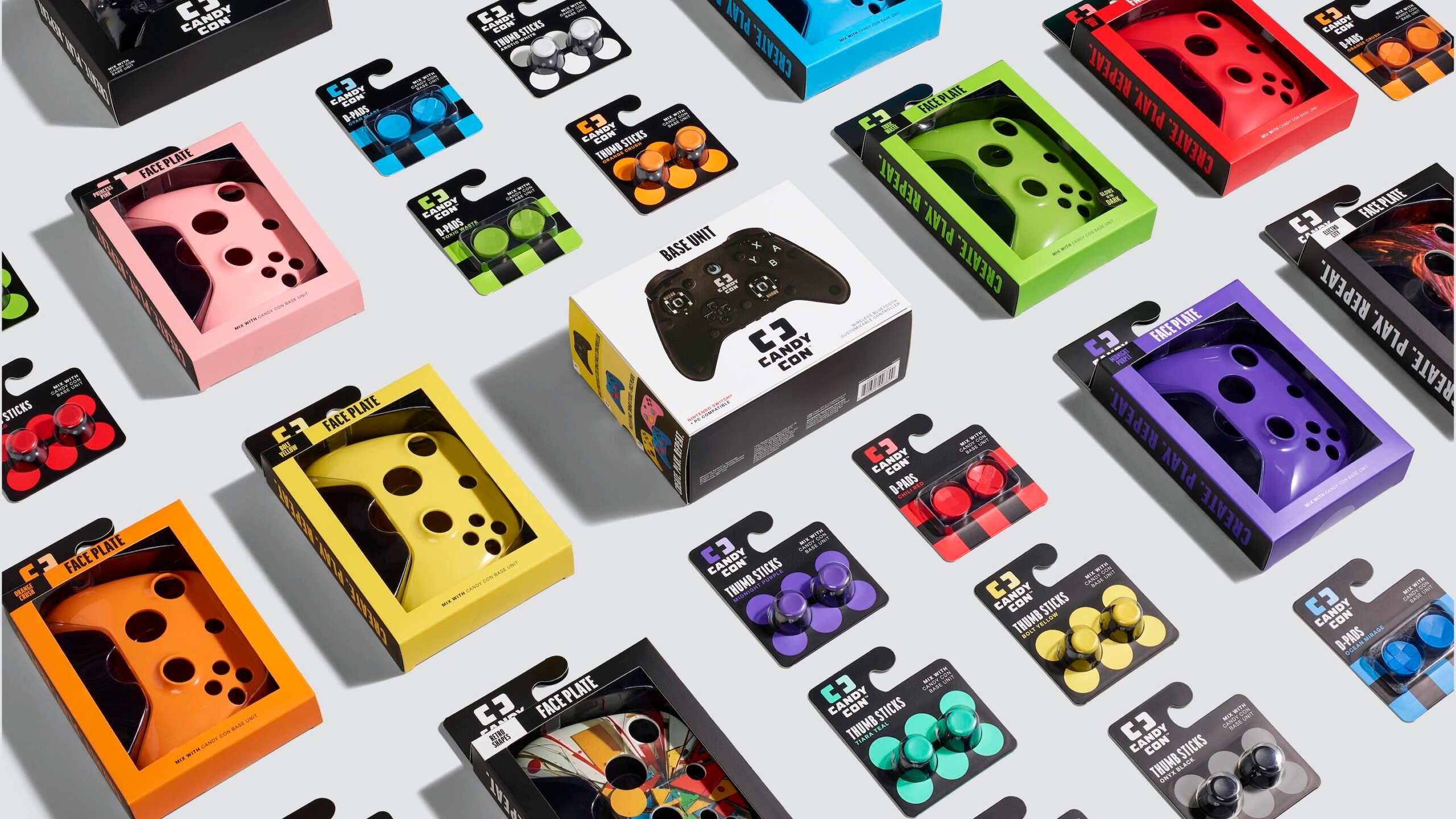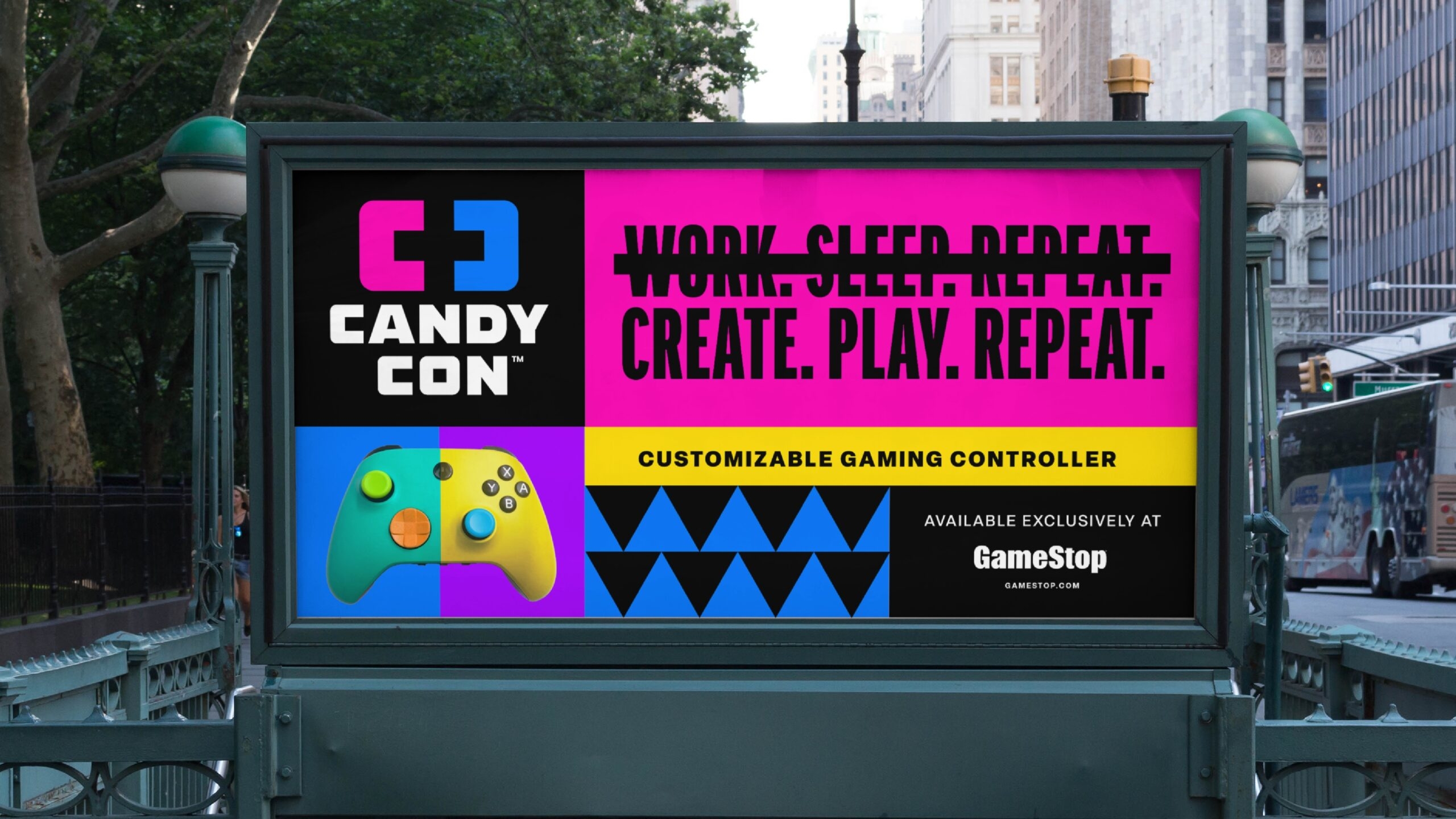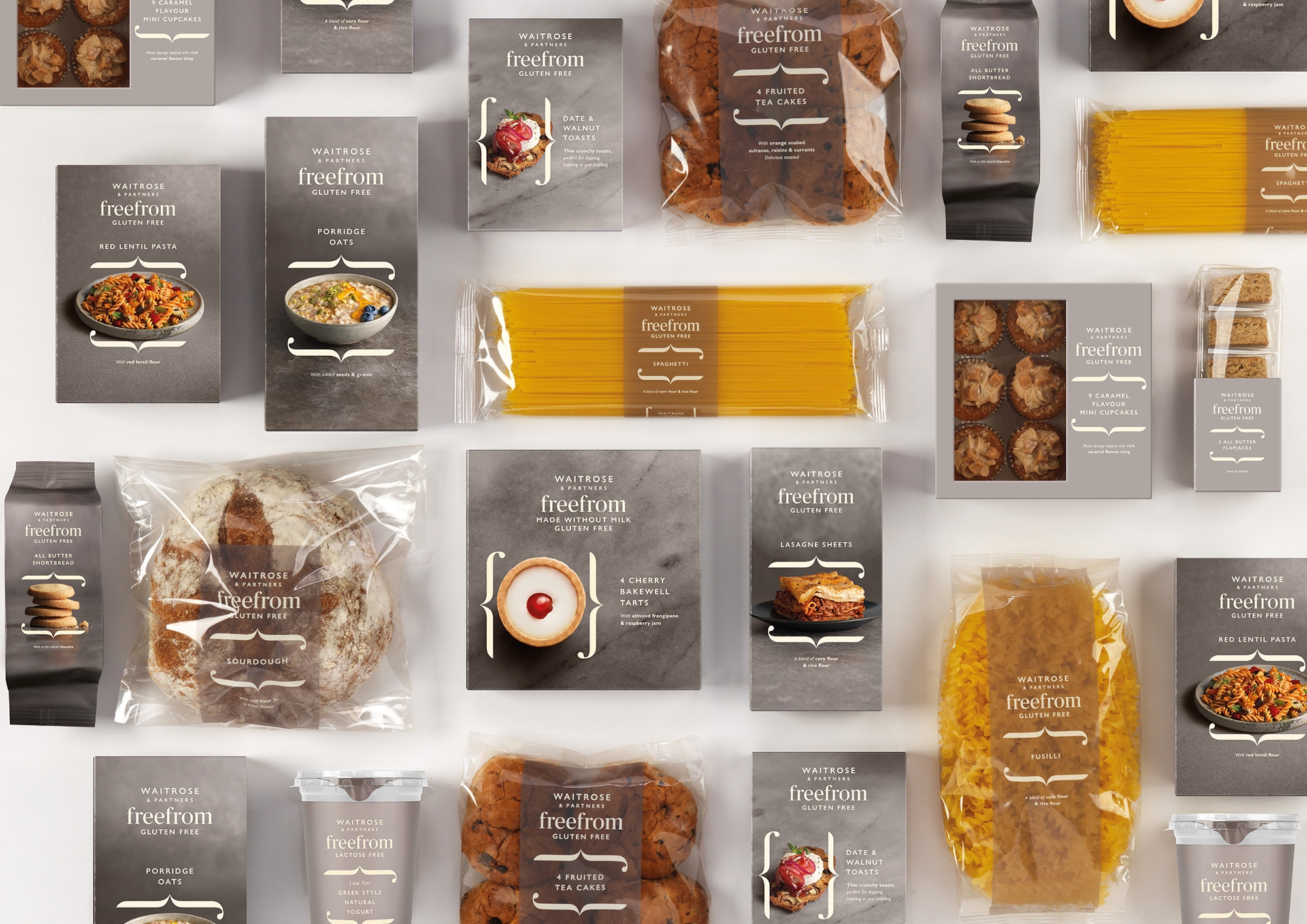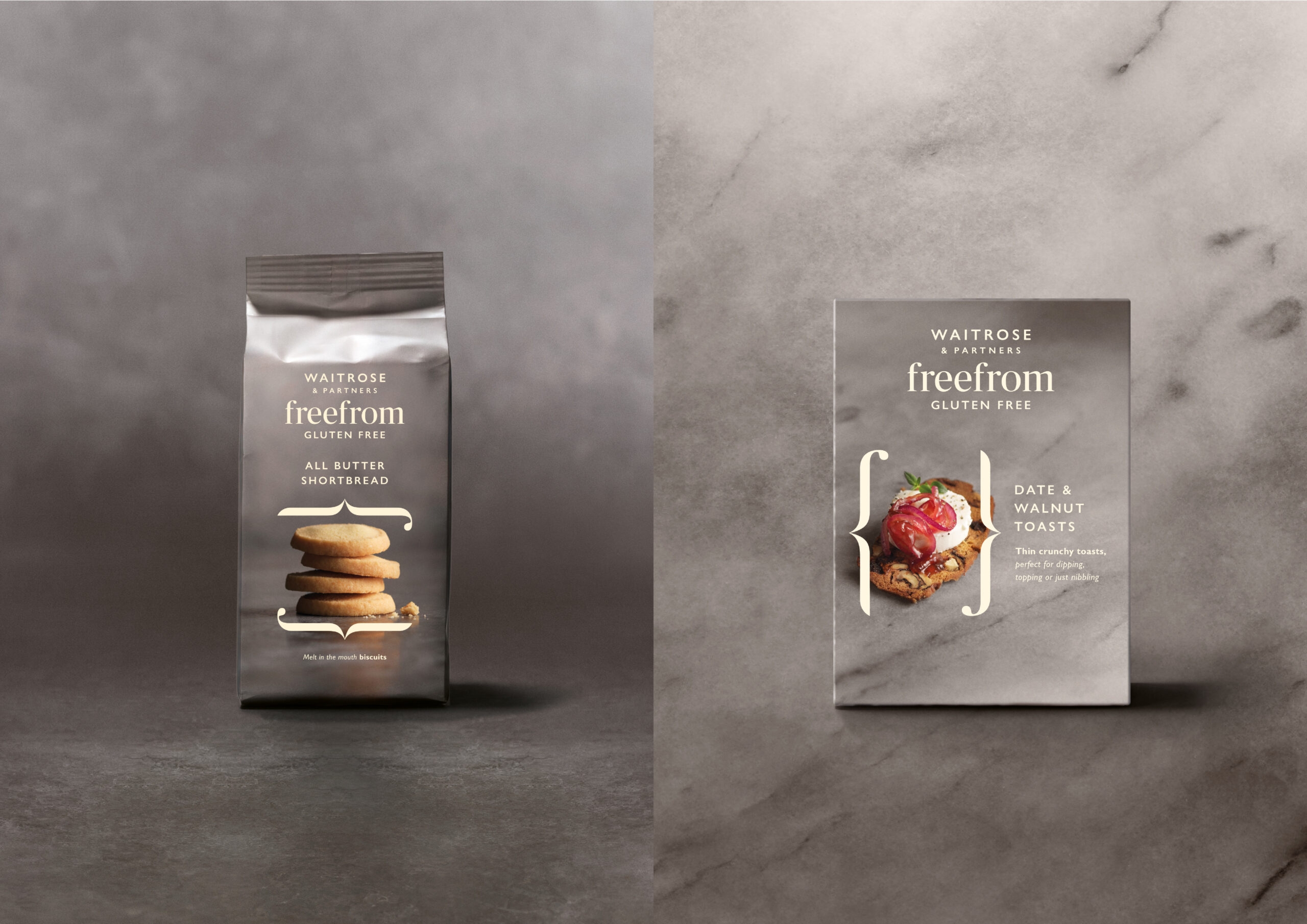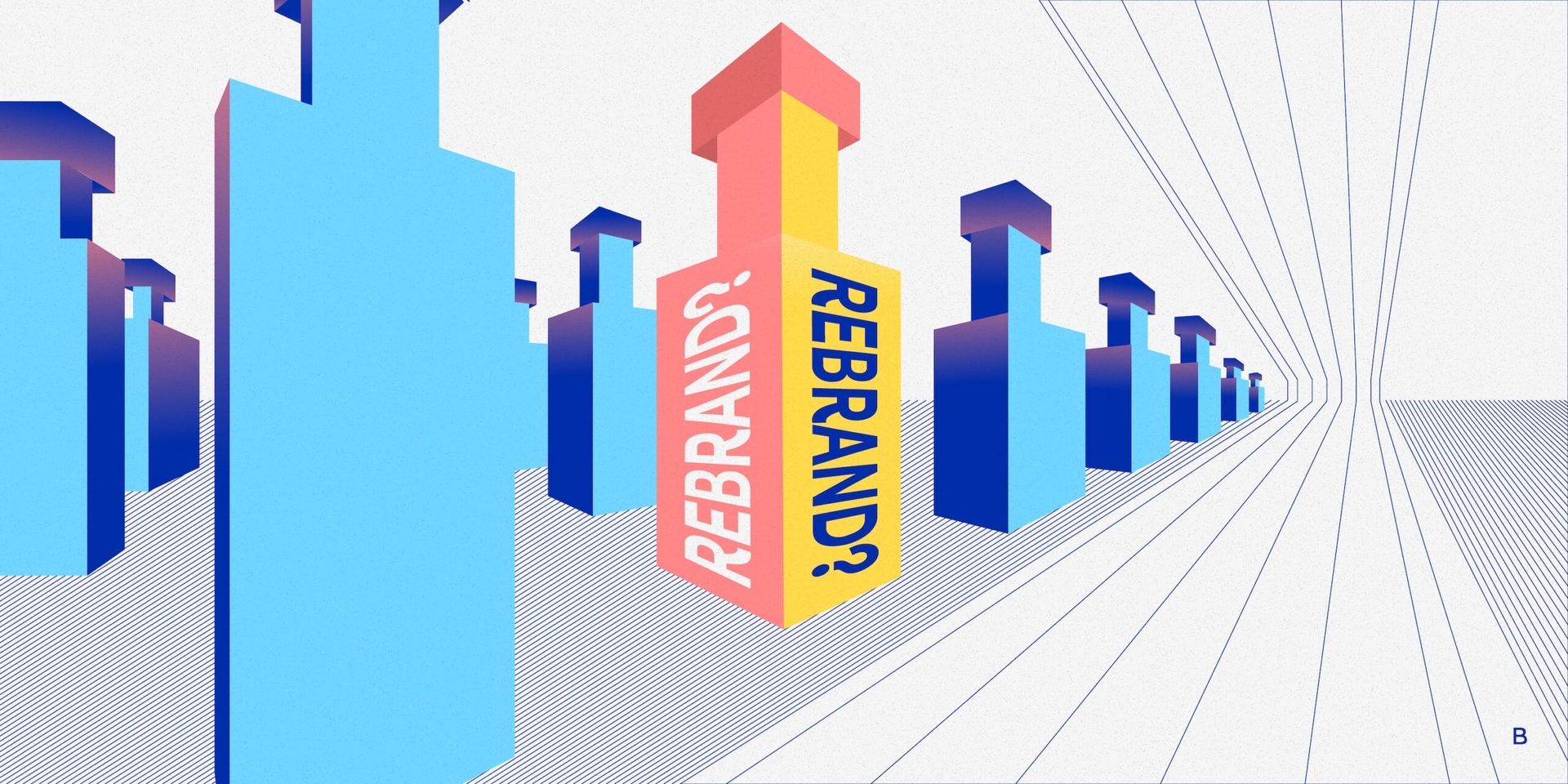
Reasons to Rebrand: Expert Insights from an Award-Winning CPG Branding Agency.
September 5, 2024
If you’re a CPG brand considering a rebrand, chances are you have a lot of questions.
What are the main reasons you should rebrand? What does rebranding involve? What are the benefits of rebranding? And what are the secrets to rebranding success?
They’re all good questions to ask—and 40 years of leading rebranding projects for some of the biggest names in CPG means we’ve had a lot of practice answering them.
This article will focus on the top 5 reasons our clients choose us for a rebrand. We’ll explain the brand challenges, and explore the benefits of rebranding, along with sharing our most successful client rebrands for inspiration.
Top Reasons to Rebrand:
- You lack the strategic foundation to support your product
- You’re expanding into new categories
- Your category is crowded with competitors
- You’re transitioning from e-commerce to bricks and mortar
- You’re becoming irrelevant
A great product can only get you so far. Maybe yours was the first true innovation in your category, or you capitalized on a trend at just the right moment. Now, you’re struggling to sustain momentum. Here’s why: your product is the brand—and it’s missing the strategic foundation to fuel sustainable growth.
The solution: Find your brand truth
Rebranding goes much deeper than a cosmetic facelift. For consumers to have the right perception of you, you need to carve out a unique identity that tells a convincing, authentic story.
This is your brand truth: a core belief or idea that differentiates you from competitors and emotionally engages consumers.
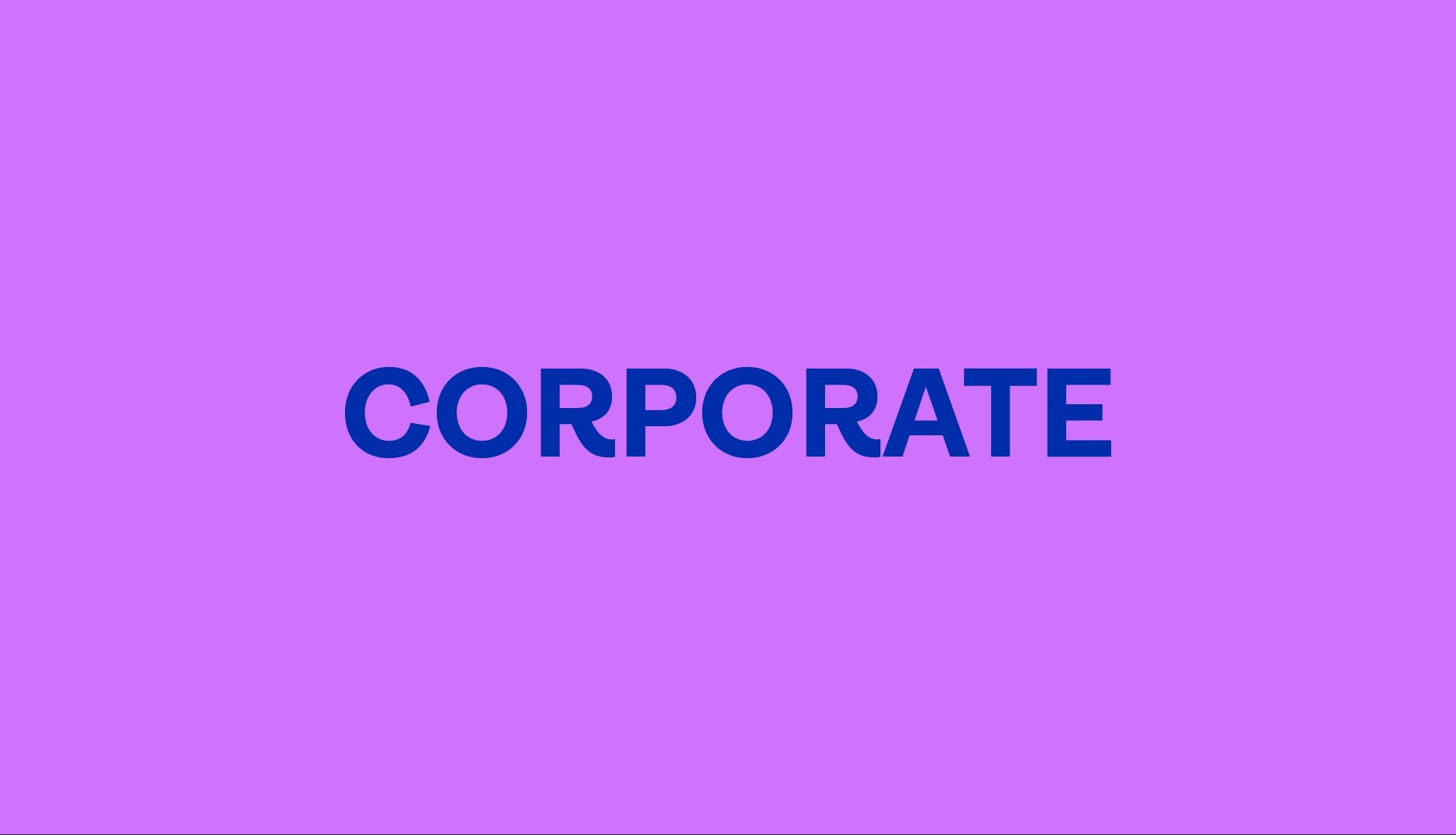
Corporate backstory: like the roots of a tree, your company’s history, values, and mission ground and nourish your brand.

Consumer insights: imagine having a direct line to your customers’ thoughts and feelings. Understanding their desires and pain points is like holding a treasure map to what they truly value.

Cultural shifts: picture a surfer riding the waves—recognizing and adapting to societal trends helps your brand to stay relevant and catch the biggest waves of change.
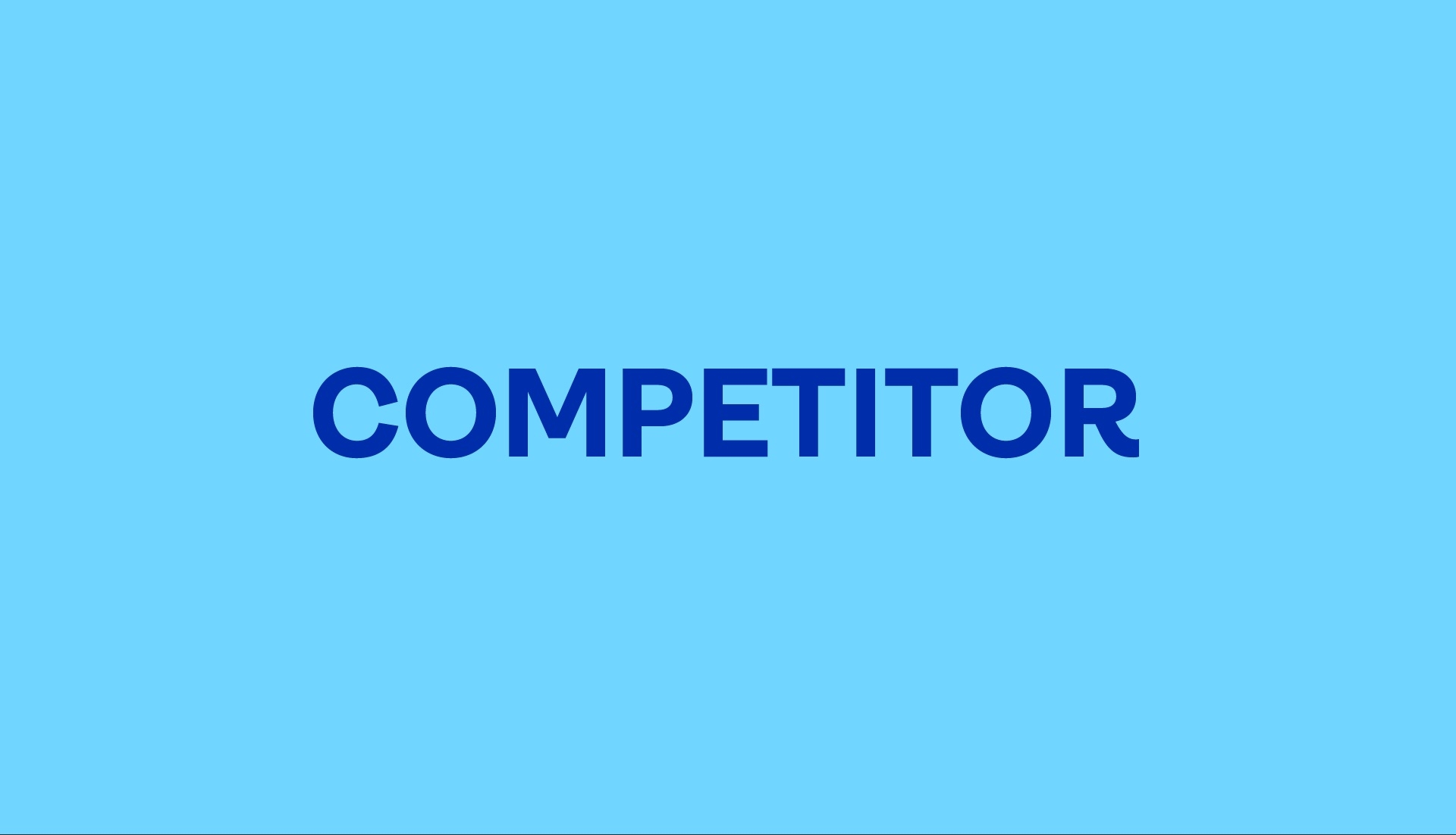
Competitor analysis: like a chess game, by studying your opponents’ moves, you can anticipate their strategies and find your own path to victory.
Your brand truth can have a purpose, like Dove’s rebrand with a social message championing real beauty. It can also be achieved through compelling simplicity, like Liquid Death’s “murder your thirst” strategy. Liquid Death, which simply sells bottled water, is now a billion-dollar company, proving that a simple, well-spun concept can significantly impact your bottom line.
The benefits of finding your brand truth
In a world where there’s a lot of pressure for brands to be everywhere, all at once, it can feel intimidating to choose one concept that determines your entire positioning. However, identifying your brand truth is the best way to cut through the noise.
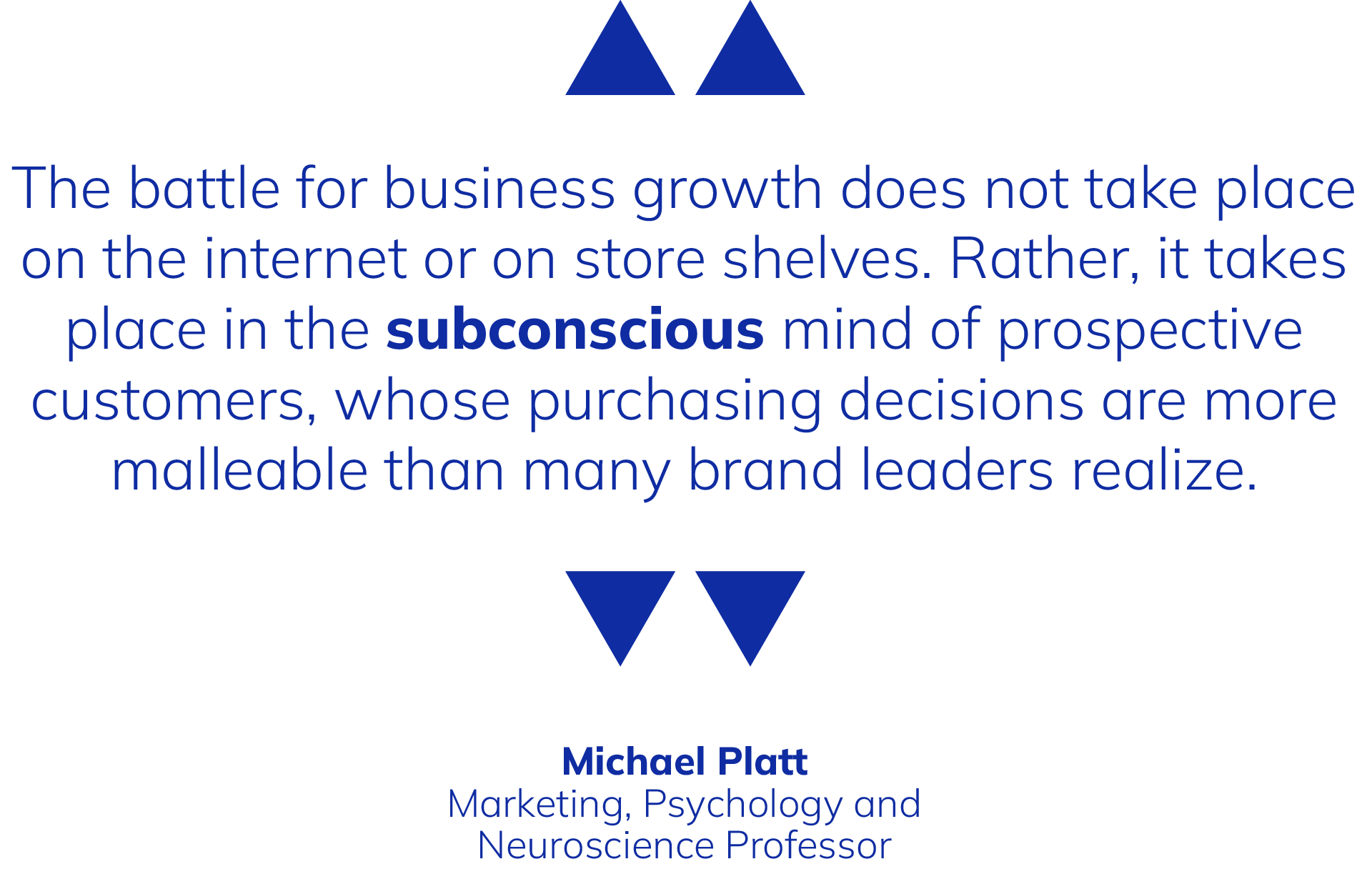
Finding your brand truth gives you authenticity that turns heads and fosters meaningful and enduring connections with your customers. It’s a non-tangible asset your competitors won’t be able to replicate (even if they copy your product), which ultimately boosts business value.
Research has shown that brands with strong brand equity can charge 20% more than competitors.
When GameStop approached us with an idea to launch an own brand line, they needed positioning to disrupt the customized controller category. Through a combination of creativity, collaboration and customer research, we identified a brand truth that celebrates the fun, social side of gaming.
Embodied by the tagline “CREATE, PLAY, REPEAT”, with a visual identity inspired by pick ’n’ mix candy, the result was a range of controllers which gamers can customize with different colors and add-ons. Helping CANDY CON win the hearts of the gaming community as soon as it hit shelves.
Takeaways
- Get clear on the difference between product and brand
- Invest in your strategic foundations
- Identify your brand truth: a core belief or key idea that no one else can replicate
- Build an authentic brand narrative around your brand truth
Have you identified your brand truth yet?
Take our brand health quiz to find out.
Business is going great and you’re expanding into new categories. Except, the more product lines you add, the greater the risk your brand becomes diluted. Does your existing brand make sense for these new categories and products? Will it be easy and intuitive for customers to understand?
All too often brands haven’t answered these questions before they expand. Rebranding at this early stage will help you define relationships between product lines, build awareness around your different offerings, strengthen equity, increase efficiency, and capitalize on opportunities for growth.
The solution: define your brand architecture
Your brand architecture is that glue that holds everything together; an organizational framework that defines the role of each brand, sub-brand or product line in your portfolio and the relationships, similarities and differences between them. As described by organizational theorist David Aaker, there are two main frameworks brands can consider: either a Branded House, where different products or offerings sit under a dominant master brand, or a House of Brands, where independent, standalone brands share a “parent” corporate brand.
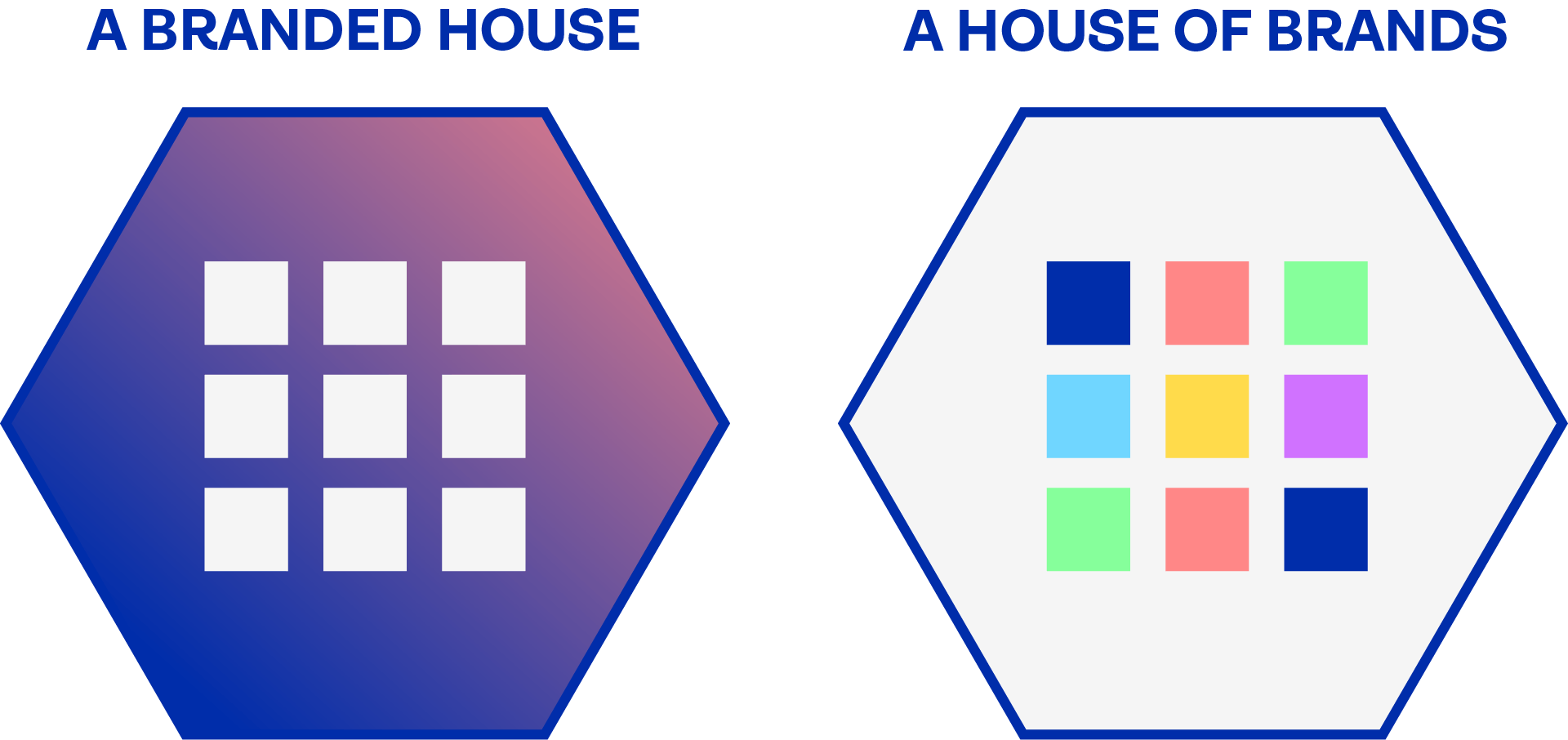
The goal is to create familiar and intuitive experiences for your customers, focusing on cohesion rather than mere consistency.
The benefits of defining your brand architecture
- Brand recognition and perception
Brand architecture gives you the flexibility to adapt and evolve over time, even across diverse categories.
For example, in many countries Heinz branding spans multiple top-level and sub-categories. While ketchup and beanz get their own advertising campaigns, and color coding delineates product ranges and flavors, all Heinz packaging features the iconic keystone shape front and center.
This unbeatable brand recognition simplifies decision-making for consumers, which is why Heinz dominates each of its categories.
- Internal efficiency and brand awareness
With a framework in place, identifying new areas of growth opportunities becomes straightforward. It provides flexibility to expand with new product lines and sub-brands without requiring a complete redesign.
It’s also much easier to articulate messaging and develop marketing campaigns. Plus, you can enhance brand awareness through cross-selling opportunities.
As the world of mobility evolves, Castrol needed to expand into new electric vehicle categories.
We worked with them to design ON: a new, forward-thinking sub-brand that could help reinvent Castrol from a traditional oil business to one that’s driving the electric vehicle revolution.
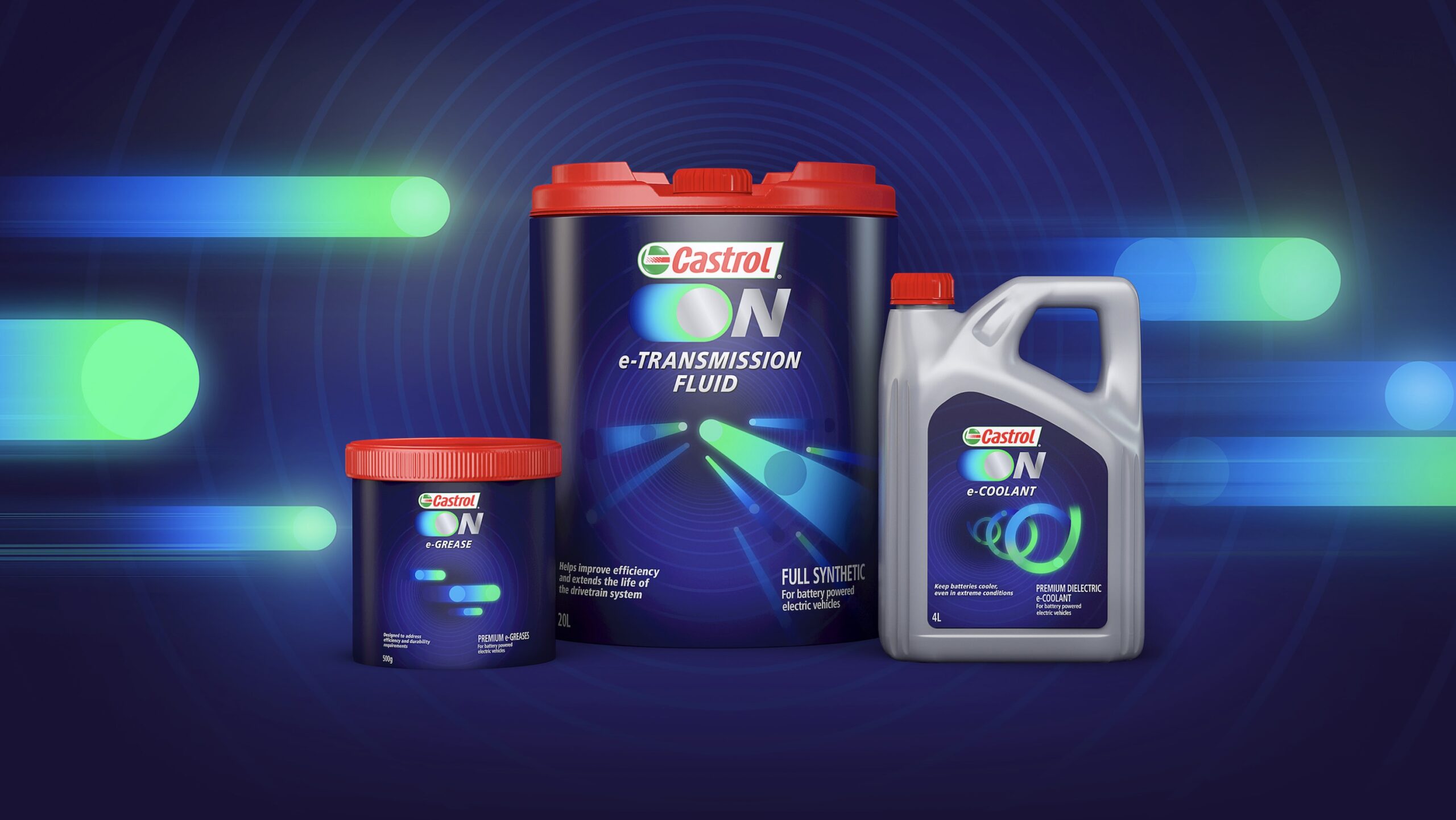
This new sub-brand fits seamlessly into Castrol’s overall brand architecture, illustrating how a cohesive structure can support diversification and innovation. By organizing their portfolio under a clear and coherent brand architecture, Castrol ensures that each new venture strengthens the master brand while maintaining clarity and focus for their customers.
Takeaways:
- Define your brand architecture before you expand into new categories
- Evaluate your portfolio and identify the similarities and differences between products and categories
- Understand the difference between cohesion and consistency
Is your product portfolio cohesive enough for expansion?
Take our brand health quiz to find out.
Suddenly, your category is a lot more crowded and competitors are hot on your tail. If you don’t act fast, you risk blending into the background and losing market share.
It’s what branding expert Jack Trout refers to as a “differentiate or die” moment. Many brands find themselves in this position and often respond by doubling down on attributes and features that differentiate their offering (for example, a cheaper price point or a lower sugar content).
However, in crowded markets differentiation alone is not enough to stand head and shoulders above the rest. You need something extra: distinctiveness.
The solution: level up your brand distinctiveness
Brand distinctiveness is the secret to etching your brand in your customer’s mind.
While differentiation works at a product, service or price level, distinctiveness is all about building your brand world. Essentially, that’s everything that makes your brand instantly identifiable to customers.
Your brand world encompasses your visual identity (logo, colors, house style), your brand personality (messaging, tone of voice), and experiences you provide (customer service, unboxing, social impact).
The benefits of brand distinctiveness
When you walk into a store and head to the ice cream aisle, Ben & Jerry’s distinctive branding immediately stands out. Their brightly colored tubs, playful illustrations, pun-based names, and hand-drawn fonts reflect the brand’s quirky, feel-good vibe.
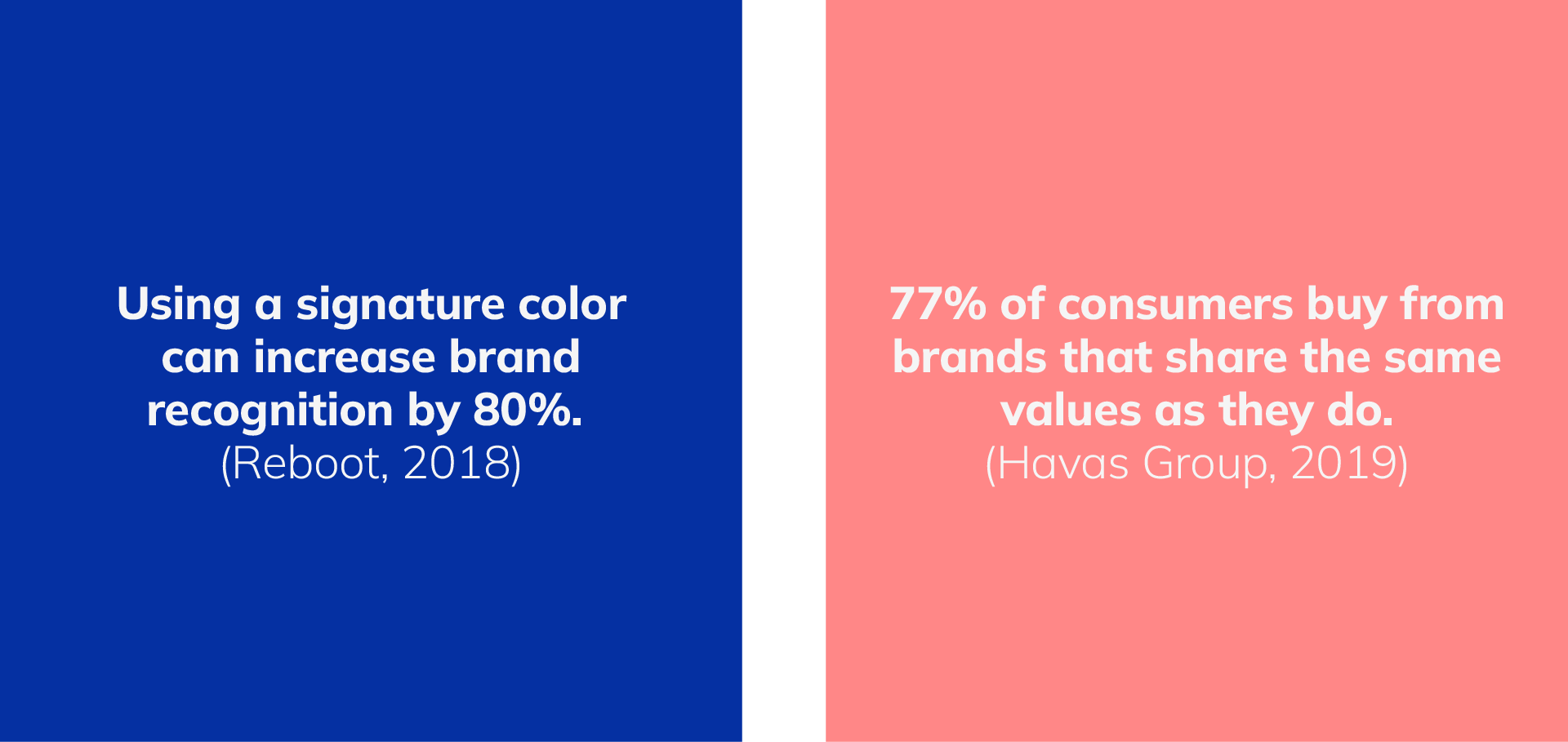
These visual elements hint at their artisanal heritage and grassroots activism, further highlighted by their bold, often political, marketing campaigns.
Despite plenty of competitors offering lower price/calorie alternatives, Ben & Jerry’s stands out for its distinctiveness. That’s why you choose to buy it, anyway!
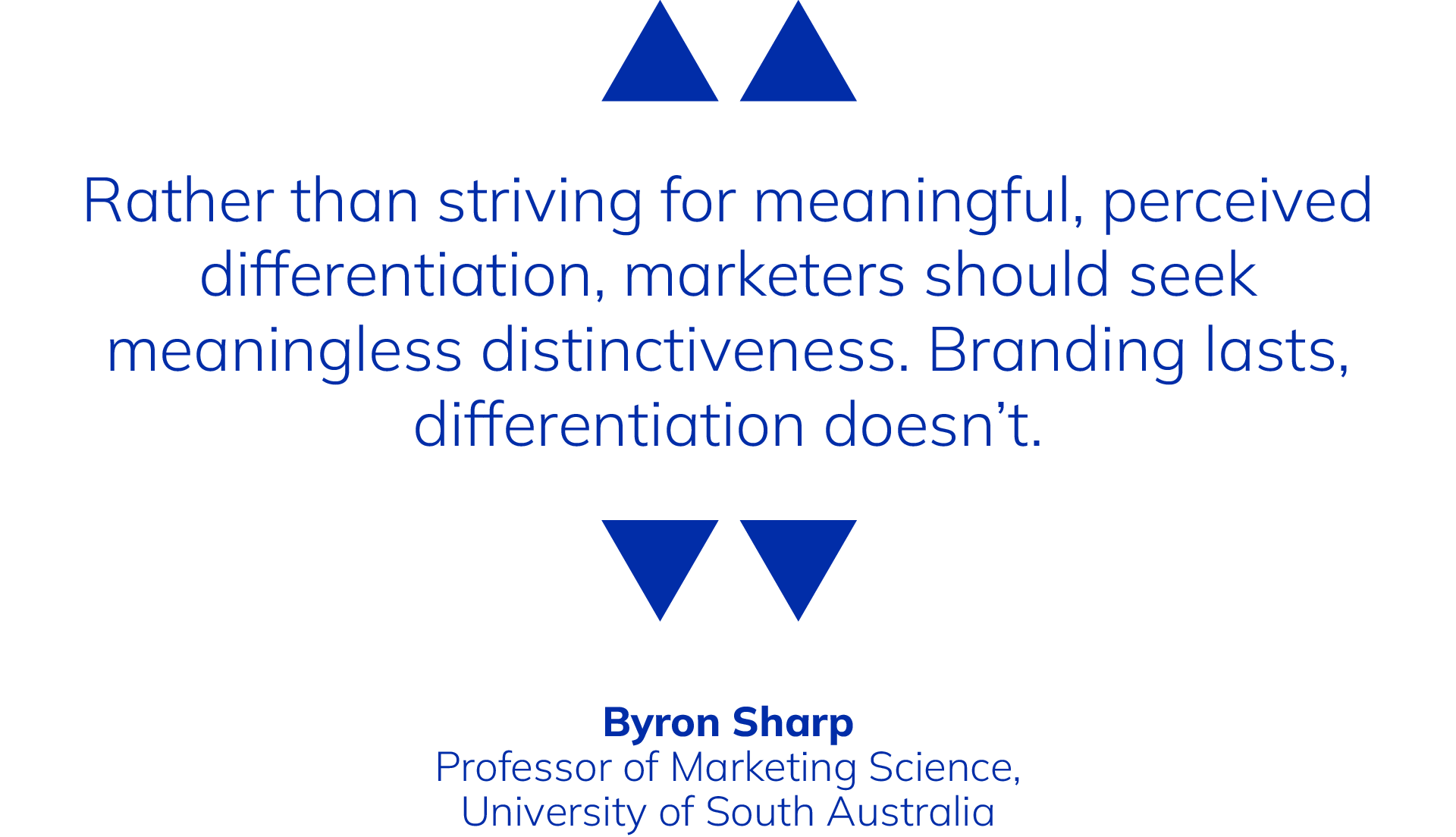
Brand distinctiveness builds positive associations that help your target audience recognize you in a cluttered marketplace and remember your brand amid ever-mounting distractions. Take Thryve, our award-winning client, as a great example:
As demand for healthy and sustainable meat-free alternatives rises, plenty of existing plant-based brands have launched in the Middle East. However, none of them had a meaningful connection to the local market. So we helped Thryve create a distinctive brand and visual identity that could speak to a Middle Eastern audience. This one-year-old brand has already won five international awards for its distinctiveness.
Takeaways
- Know the difference between differentiation and distinctiveness
- Create a brand identity that’s unmistakably yours, to stand out from the competition
- Build a holistic brand world (everything from your logo to your tone of voice and your stance on social causes) to foster emotional connections with customers
Are you doing enough to stand out from the competition?
Take our brand health quiz to find out.
CPG brands used to have huge successes selling their products through digital, direct-to-consumer (D2C) channels, like social media and e-commerce. However, as online ad spend continues to climb and returns diminish, more and more brands are considering traditional retail.
This transition from pure pixels to bricks and mortar isn’t easy. Perhaps you’re hearing a lot of ‘no’s or ‘maybe’s from retail buyers. Or you have been stocked in stores, but product isn’t flying off the shelves.
In both cases, there’s one culprit to blame: your packaging. That’s because what works on your website or social media often falls short on the shelf—where background, lighting and, crucially, neighboring products are out of your control.
And if you don’t succeed in retail spaces, you won’t hit that next phase of growth—leaving you reliant on risky, unstable and pricey D2C revenue streams.
The solution: evolutionary pack design that’s fit for shelf
Packaging is the most powerful tool in the retail journey, which is why most D2C brands will need to make some changes in order to transition. You don’t need to start from scratch; instead, it’s about evolving and optimizing your current packaging design.
On social media and digital channels, where customers can read reviews or watch influencer ads, the purchasing journey is indefinite. Whereas the average consumer spends only 13 seconds on in-store purchases.. So, in that small window of time, you need to make it quick, easy and instinctive for them to distinguish between brands, categories and products.
You can achieve this using the 3 As of packaging design:
- ATTRACT your customer from 6 feet away
Phase: category and brand orientation
Techniques: use color, logos and brand icons to build visibility and capture attention
Example: Tony’s Chocolonely’s bold primary colors and playful, eye-catching logo
- ASSIST your customer from 3 feet away
Phase: variant navigation
Techniques: use secondary color coding, product-specific information and key benefits to help shoppers decide whether the product is right for them
Example: the different colored wrappers that distinguish Tony’s chocolate flavors
- ASSURE your customer from 1 foot away
Phase: selection and confirmation
Techniques: use messaging to communicate reasons-to-believe and additional attributes
Example: Tony’s “100% slave free chocolate” messaging
The benefits of evolutionary pack design that’s fit for shelf
Evolving your packaging design to meet the demands of a busy, crowded store aisle—and a busy, impulsive shopper—will increase your brand visibility and presence on shelf, help you reach new audiences, and drive sales.
Ultimately, retail buyers know this. So they’ll only stock brands who meet these demands, or they’ll suggest you rebrand your packaging first.
Over 70% of purchasing decisions are made in-store.
Remember, following the 3 As framework is all about using the right graphic language for the right job—often, it’s a case of simplifying, rearranging and fine-tuning, rather than totally overhauling your messaging and identity.
We can see this evolution at play in a lot of digitally native beauty brands who have expanded into physical retail. For example, Fenty Beauty started out with sleek, minimalist packaging when the focus was on the products’ diverse range of shades. As the brand grew its retail presence, they began to introduce bolder, more playful designs, using brighter colors and artist collaborations.
Takeaways
- Diversify into retail if you aren’t seeing the same ROI from D2C channels
- Evolve your packaging to be fit for shelf
- Follow the 3 As formula to optimize your existing pack design
Not sure if your packaging will stand out in-store?
Take our brand health quiz to find out.
If there’s one thing we can gather from all the rebranding reasons we’ve covered so far, it’s this: nothing stays the same. From culture to economics, the world around us is constantly changing—and brands who don’t keep up risk becoming irrelevant.
When brands fall behind the times, a variety of cultural and market factors can be at play:
- Cultural representation becomes outdated or unacceptable.
Example: Aunt Jemima’s and Quaker Oats needed to move on from racially-charged iconography and brand legacies that clashed with current societal norms.
- The product loses its appeal as trends change.
Example: Kraft mac & cheese, a popular convenience and comfort food, faced challenges when health-conscious consumers turned away from heavily processed foods.
- Competitors completely reframe the product category.
Example: Upfield’s “I Can’t Believe It’s Not Butter” was an established margarine brand, but when plant-based food started booming, it caught on too late—allowing challenger brands to capitalize on demand for butter alternatives.
- Broader cultural shifts have altered consumer perceptions of the category.
Example: Special K, originally marketed for dieting, had to adapt its image as societal views on body image and health evolved.
Two-thirds (64 percent) of consumers around the world said that they would buy from a brand or boycott it solely because of its position on a social or political issue (Edelman, 2018)
Irrelevance is one of the most sensitive reasons for rebranding; the more established you are, the more equity you have to lose. But a worse fate still is fading into obsolescence. So if what you’ve done before is no longer working, it’s likely a sign you’re due a rebrand.
The solution: packaging redesign that’s fit for current times
While brands looking to break into retail need an evolutionary approach to pack design (optimizing and building on their existing assets), brands who are facing irrelevance may need a more revolutionary approach: a complete packaging redesign that tells a new story.
To make sure your pack design cuts through and speaks to the current cultural mood, it’s vital to look beyond your product or category and understand the wider landscape. An insight-driven, trend-focused, customer-centric approach will help you stay attuned to cultural shifts and update your brand elements accordingly. This involves investing in research and conducting periodic brand assessments to make sure your branding remains relevant, relatable and resonant.
The benefits of packaging redesign that’s fit for current times
Rebranding your packaging to stay culturally relevant can significantly impact your brand’s success and longevity in the market. By aligning your brand with wider attitudes and values, you can identify new market or category opportunities, capitalize on emerging consumer needs, and engage new audiences.
Another benefit is enhanced brand trust and customer loyalty. A thoughtful rebrand signals a commitment to a brand’s customer base, communicating responsiveness to change. While it can be intimidating to rebrand, more often than not, audiences are very understanding and appreciative of businesses’ efforts to meet their evolving values and needs. Particularly for younger CPG brands who don’t have a problematic backstory, it can be an opportunity to transparently own your story and turn your rebrand into a marketing campaign.
As the freefrom category evolved from anti-allergy products to a lifestyle choice, British retailer Waitrose needed to get up to speed. We designed a brand that doesn’t apologize for what it lacks, to help them cater to new appetites.
Takeaways
- Understand which drivers are causing your brand to become irrelevant
- Invest in research and periodic brand assessments to make sure you’re connecting with your audience
- Remember that consumers appreciate brands who make an effort to stay relevant, relatable and resonant
A rebrand is a big investment of your time, energy and money. It’s not without risk, so you need to feel confident that you’re moving ahead for the right reasons:
- You’re creating strategic foundations
- You’re expanding into new categories
- You’re standing above the competition
- You’re transitioning from e-commerce to retail
- You’re becoming more relevant over time
Above all, you need to be crystal clear on the potential a rebrand holds for you. Because ultimately, that commitment boils down to one thing: growth. Either you’re making the most of your potential as you are, or your current branding is leaving valuable opportunities on the table.
Not sure where you stand? Take our brand health quiz to get started.
Get started below
Take our brand health quiz to find out.
Contact us to see how BRANDED can help



